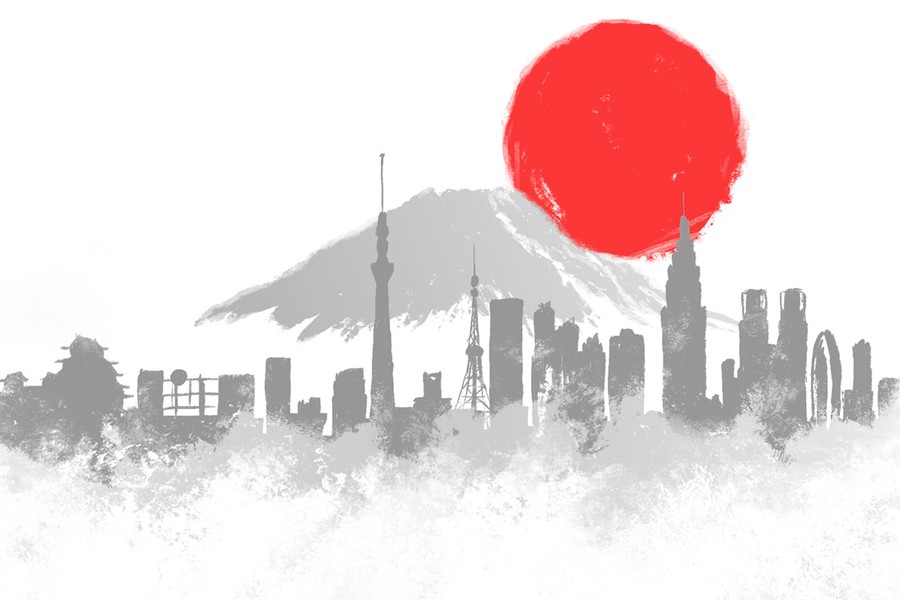Just as we are absorbed by politics today, so were we eight years ago. However, we were not focused on the US, where a second term for President Obama offered continuity. Rather our attention was on that rarest of events, something interesting happening in Japanese politics.
Ever since Junichiro Koizumi left office in 2006, Japan had had a fairground carousel of Prime Ministers who lasted barely a year before being ousted. Eight years ago, however, Shinzo Abe returned to the office of Prime Minister. He had held the office before in 2006, but lasted just a year before stepping down due to ill health. However, by 2012 he recovered, won the LDP leadership in September and then a general election in December.
Abe campaigned on the economy - monetary easing, fiscal spending, and reform – the policies that became known as Abenomics. In fact, this was not his original plan. He had wanted to run on a platform of constitutional change but was persuaded to focus on reforming the economy first and then the constitution by the man who now succeeds him as Prime Minister, Yoshihide Suga. Suga spent the entirety of Abe’s second term in office as his Chief Cabinet Secretary. In Japan, this is a ministerial position – not that of a civil servant. As such, its role is rather different from its UK equivalent – sometimes it is more like the Chief Whip, sometimes more like chief advisor and manager, sometimes more like a policy guru. Suga seems to have handled all these roles adroitly. While Abe handled diplomacy, Suga focused on domestic policy. It is not too much of a stretch to state that Abenomics was in fact Suganomics.
So, this year, politics are mirrored versus 2012: there is continuity in Japan while there is change in the US. However, one thing remains the same: foreign investors are uninterested in Japan. It is generally recognised that in 2012 foreign investors had their lowest exposure to Japanese equities since the Bubble. Then in 2013, the combination of Abe’s accession to Prime Minister, the promise of Abenomics, and the appointment of Haruhiko Kuroda as Governor of the Bank of Japan (and his implementation of QQE, or Quantitative and Qualitative Easing) brought a surge of investment by foreigners.
However, in 2020 foreigners have once again relapsed into their old indifference. Allocation to Japan is – if anything – even lower than it was in 2012. Partly this may stem from a feeling of ennui that structural reform is still tomorrow’s news, and partly it may be that while Japan may be the Land of the Rising Sun, it is not the Land of the Rising Unicorn. An international market that is obsessed with mega-cap software companies, content providers and social media growth stocks in the US finds comparatively slim pickings in Japan.
While Japan may be the Land of the Rising Sun, it is not the Land of the Rising Unicorn.
That is not to say that Japan has been immune to the siren call of growth. Just as elsewhere, value and cyclical stocks have languished while growth stocks now carry a premium. However, Japan is nothing like as dominated by those growth stocks as the US, where five stocks – Apple, Microsoft, Amazon, Facebook and Google – are now more than 20% of the S&P500, and neither are Japanese valuations as stretched. Indeed, Japan has not rerated at all since 2012 – despite the Nikkei tripling from those 2012 lows to reach 29 year highs in November.
However, while it is hard to find any Rising Mega-Unicorns to tempt the foreign investor, their ennui over structural reform is unjustified. A focus of the Abe administration was to drive growth by getting idle assets back to work. Corporate sector balance sheets were woefully inefficient with net cash and liquid assets equivalent to two thirds of GDP. This made some sense in a period of deflation as the cash could give you a real return risk free. However, it reinforced the deflationary spiral – keep hoarding the cash, keep clipping the coupons, don’t invest … that leads to further deflation etc, which is why Abe introduced the Corporate Governance Code, the Stewardship Code, and a focus on engagement by the huge public pension funds.
The results for investors have been dramatic. Dividend yields have been increasing every year until this year. Buy backs have been steadily increasing. While this year dividends are likely to be slightly down (¥14tn vs ¥14.2tn last year – in 2012 only ¥6.6tn of dividends were paid), TOPIX still offers a higher yield than the S&P500. It is true that cash levels remain high despite rising investment – but only because free cash flow has accelerated even faster than payouts. Corporate restructuring continues apace, and the threat of action from activist investors and hostile acquirers is real.
That last comment may prompt a raised eyebrow – after all, isn’t Japan famous for its lack of hostile M&A? Until last year, there had only been 16 completed hostile takeovers since 2000 and the total value of those deals was just a few billion Yen. To be fair, while RJR Nabisco lives long in memory, US doesn’t really see very much hostile M&A activity either … though, admittedly, it has at least had some (somewhat under 0.1% of all M&A deals over the last 5 years, according to Bloomberg M&A database). However, Japan has seen a flurry of deals in the last 18 months notable not only for their size, but also for involving blue-chip listed companies and the participation of blue-chip brokers. No longer can a company shelter behind a web of relationships and cross-shareholdings.
I am always wary of declaring that “This time is different”, but there really are some dramatic differences from the start of Abe’s administration in 2012, most notably that those cash rich corporate balance sheets are being invested, are being paid out and are under threat. On the other hand, the start of Suga’s administration is also very like 2012: a new Prime Minister; a focus on domestic reform; cheap valuations; cash rich balance sheets; and barely a foreign investor to be seen.
By Sam Perry, Senior Investment Manager, Pictet Asset Management Ltd
Views and opinions have been arrived at by the author and should not be considered a recommendation.
Illustration by Jordan Atkinson



